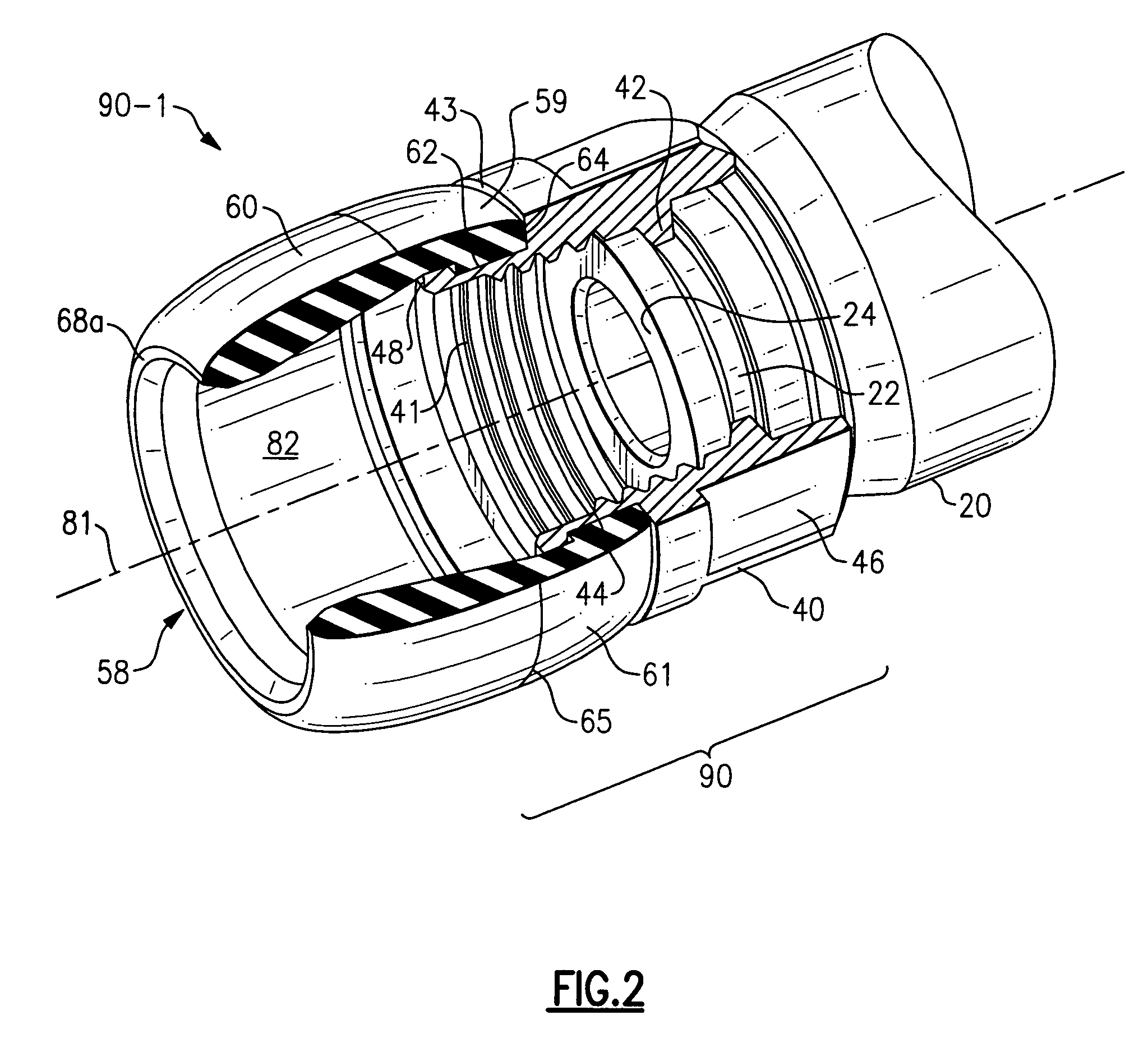Nut seal assembly for coaxial cable system components
a technology of coaxial cable and coaxial cable, which is applied in the direction of securing/insulating coupling contact members, coupling device connections, electrical devices, etc., can solve the problems of reducing the efficiency of the affected connection, corroding the electrical connections located in the connector and between the connector and the mating components, and exposed parts of the components and ports that are susceptible to corrosion and contamination
- Summary
- Abstract
- Description
- Claims
- Application Information
AI Technical Summary
Benefits of technology
Problems solved by technology
Method used
Image
Examples
second modified embodiment
[0062]the seal assembly is illustrated in FIGS. 15 and 16. The seal-grasping surface 47 similarly can be a flat, smooth surface or a flat, roughened surface suitable to frictionally and / or adhesively engage the interior sealing surface of the seal 60. In this modified embodiment, however, the forward ridge that formed the interlocking interference fit between corresponding shoulders 48 and 67 of the nut and the seal, respectively, have been eliminated. Rather, the nut seal is retained on the seal grasping surface due to either the compressive force of the elastomer material of the seal member on the seal grasping surface 47 or the frictional forces between these surfaces, alone or in conjunction with an adhesive bond between the seal grasping surface 47 of the nut 40 and the nut grasping surface 62 of the seal 60. In all other aspects, this second modified embodiment of the nut seal assembly and connectors incorporating the same operate in the same manner as exemplary embodiment of ...
PUM
 Login to View More
Login to View More Abstract
Description
Claims
Application Information
 Login to View More
Login to View More - R&D
- Intellectual Property
- Life Sciences
- Materials
- Tech Scout
- Unparalleled Data Quality
- Higher Quality Content
- 60% Fewer Hallucinations
Browse by: Latest US Patents, China's latest patents, Technical Efficacy Thesaurus, Application Domain, Technology Topic, Popular Technical Reports.
© 2025 PatSnap. All rights reserved.Legal|Privacy policy|Modern Slavery Act Transparency Statement|Sitemap|About US| Contact US: help@patsnap.com



